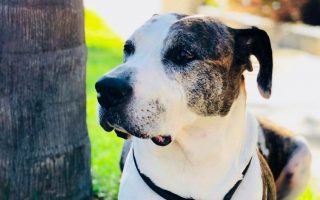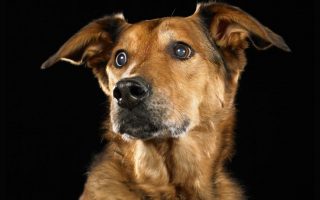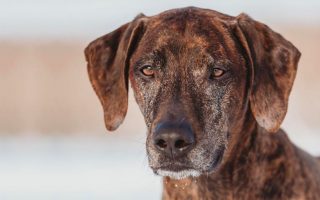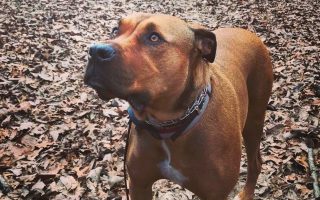The Boxer Husky mix is a rare designer breed that was created from worker dog breeds.
It has as parents the Boxer and the Siberian Husky.
Also known as Boxsky, this breed has the strength and intelligence of both parents, but it isn’t easy to determine how it would look or behave.
As with other designer dog breeds, you can only predict the traits of this hybrid by looking at the parents.
Its origin is unclear as well. Only with the parents’ history can we have an idea of the ancestry of this breed.
Its uncommon nature and rarity aren’t a bad thing, as many pet parents like what is out of the ordinary.
That being said, this dog breed might be hard to find.
You should also know how to meet the basic requirements of the Boxsky.
In this guide, you will get different facts, information, and tips on this mixed breed.
Boxsky Mixed Breed Information
| Height | 20 to 35 inches |
| Weight | 35 to 80 pounds |
| Lifespan | 12 to 15 years |
| Coat | Short, dense |
| Colors | Brindle, fawn, grey, black, white |
| Temperament | Loyal, alert, energetic, intelligent |
| Ideal For | Active families, veteran pet parent |
| Puppy Price | $800 – $1,000 |
Boxer Husky Mix Puppy Characteristics
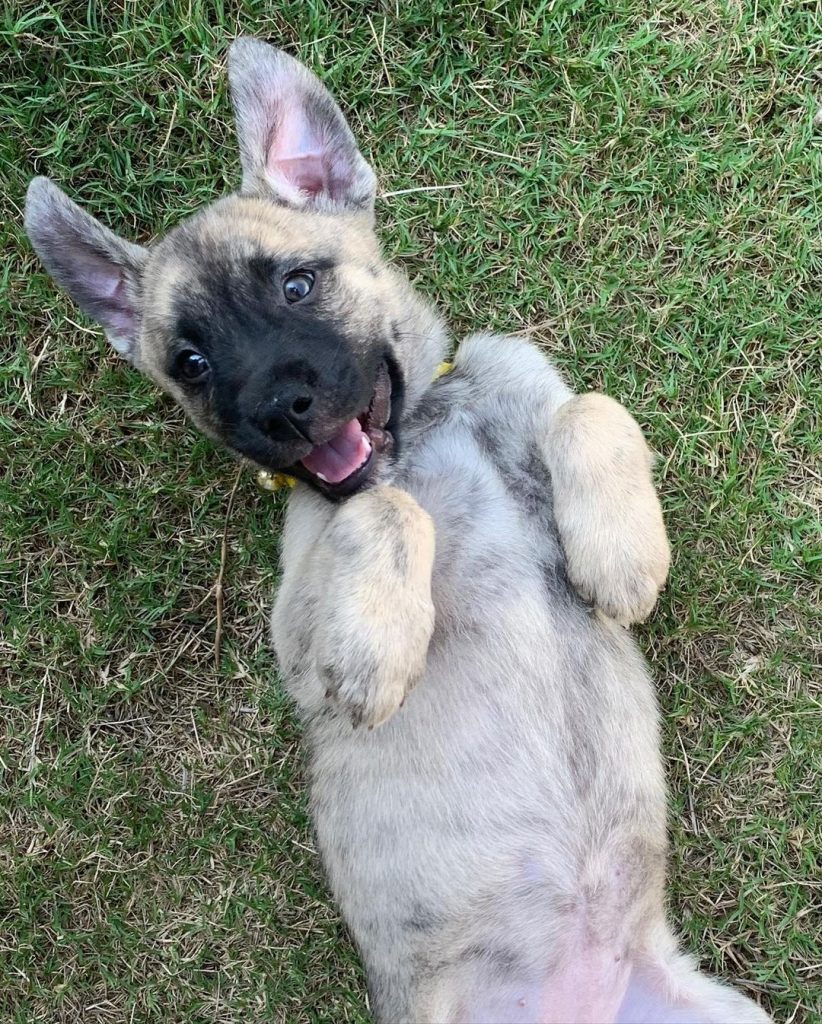
| Health | High |
| Grooming | Low |
| Friendliness | High |
| Energy | High |
| Trainability | Medium |
The Parent Breeds
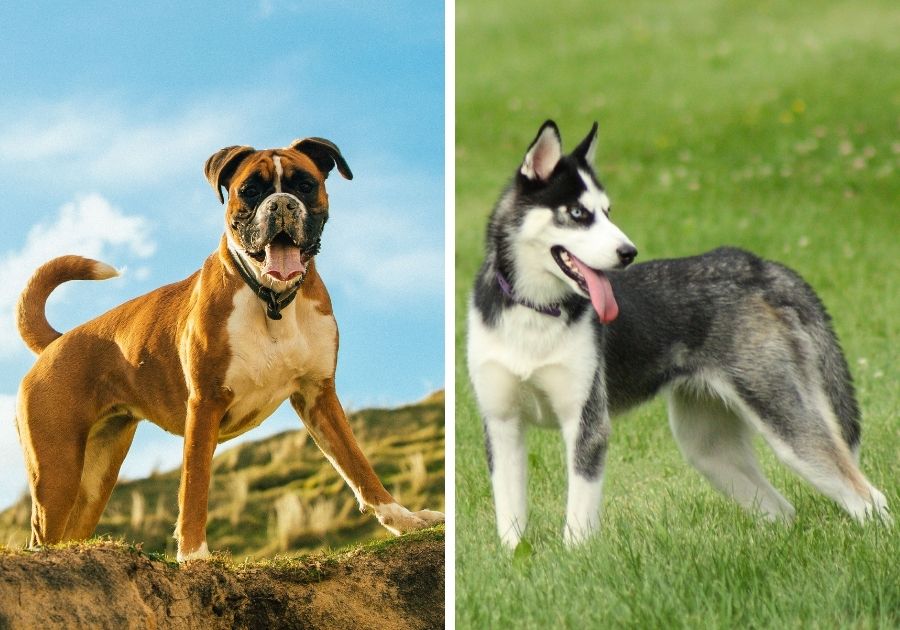
Boxer
These intimidating dogs with a name that fit their physique originated from Germany.
It descended from the German Bullenbeisser and the Bulldog. Thanks to a man named Georg Alt, we got our modern-day Boxer.
It became known around other European countries in the late 1890s.
In 1903, this breed got into the United States. A year later, the American Kennel Club recognized it.
It got popular after the Second World War.
The Boxer is a medium-sized dog breed that weighs 60 to 70 pounds and grows up to 25 inches at the shoulder.
It has a short, sleek coat that is easy to groom and comes in two major colors: Fawn and brindle.
You wouldn’t find a solid black Boxer as this breed carries no solid black gene.
It is muscular and athletic with a square head, docked tail, and cropped ears (except when the owner leaves it uncropped).
With family, Boxers show love and loyalty. They may sometimes be wary of strangers, but aggression is undesirable.
A well-trained Boxer will only attack if it senses danger. In addition, this breed is playful and often happy.
Watching one goof around is enough to make you smile.
Siberian Husky
As the name shows, The Siberian Husky is a native of the cold region of Siberia.
It was owned by the Chukchi tribe where it played the double role of a sled dog and a companion.
Huskies got into America in 1908 during the gold rush in Alaska. It is in North America that it evolved to the modern version.
It got recognized by the American Kennel Club in 1930, the same year the last of them left Siberia.
The Siberian Husky is also medium-sized like the Boxer. It weighs 35 to 60 pounds and grows up to 23 inches tall.
It has a double coat that was fit for the cold Siberian climate. The topcoat is straight and covers a softer undercoat.
Its face is shaped like a wolf, complete with erect ears. It also has a slender physique that enables it to run.
Regardless of its wild looks, the Siberian Husky is friendly with everyone and will not make a good guard dog because of its love for humans.
It is a good watchdog, however, and will alert you with a howl when it sees a stranger or a strange occurrence.
Facts about the Boxer Husky Mix You Should Know
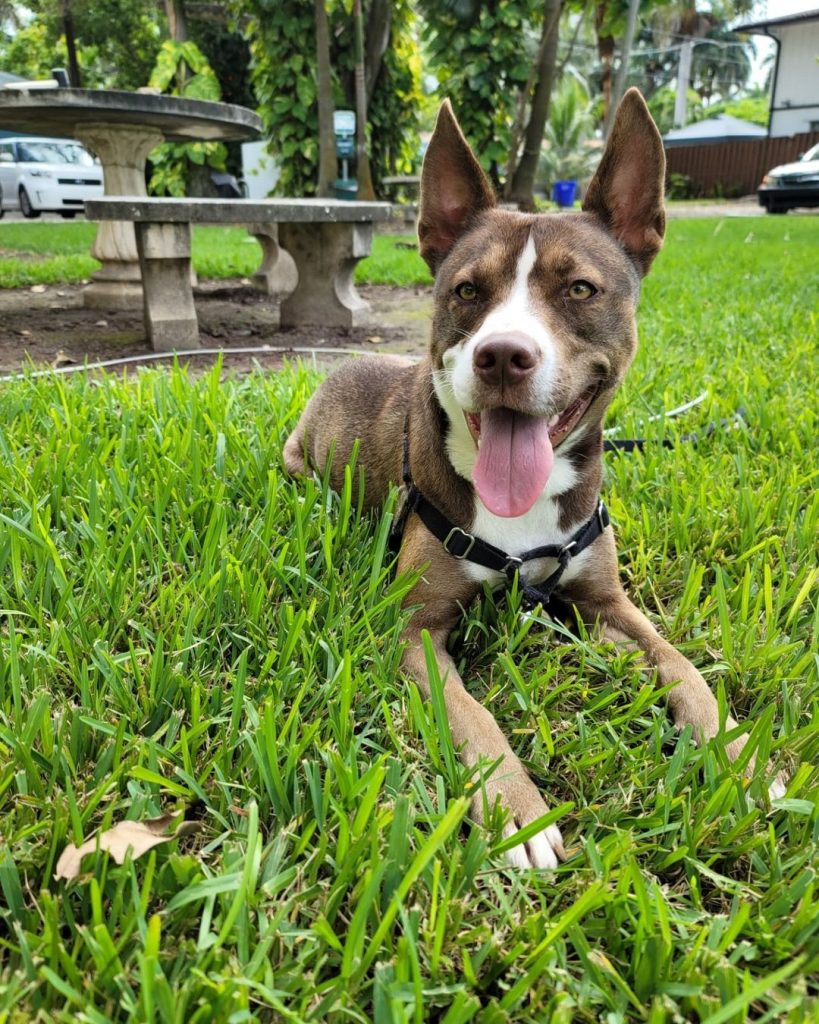
1. It is a good watchdog
With both parents being good watchdogs, the Boxsky is an excellent watchdog as well.
It is vocal, watchful, and protective of the family. All these are good qualities of a watchdog.
2. It may be hypoallergenic
Given that many Boxskies get the short coat of the Boxer parent, there is a good chance of them being good for allergy sufferers.
However, they do shed during some seasons, which might trigger an allergic reaction.
You could make arrangements to keep this breed away from an allergic person during shedding season, or you stay on the safe side and look for another mix.
3. It is not good for new pet parents
Due to the stubbornness of both parent breeds, their independent spirit, and the territorial nature of the Boxer, training the mixed breed is a demanding task that is best left for the experienced pet parent.
New owners are not advised to get this breed as they may get frustrated.
4. It needs a big environment
Due to its energy and strength, the Mix isn’t suitable for an apartment or it might be destructive.
It requires enough space to move around and let loose energy.
5. It is highly energetic
Another fact that might make this breed unsuitable for new pet parents is its high energy.
It requires an active pet parent who can satisfy its exercise needs.
Appearance of the Siberian Husky Boxer Mix
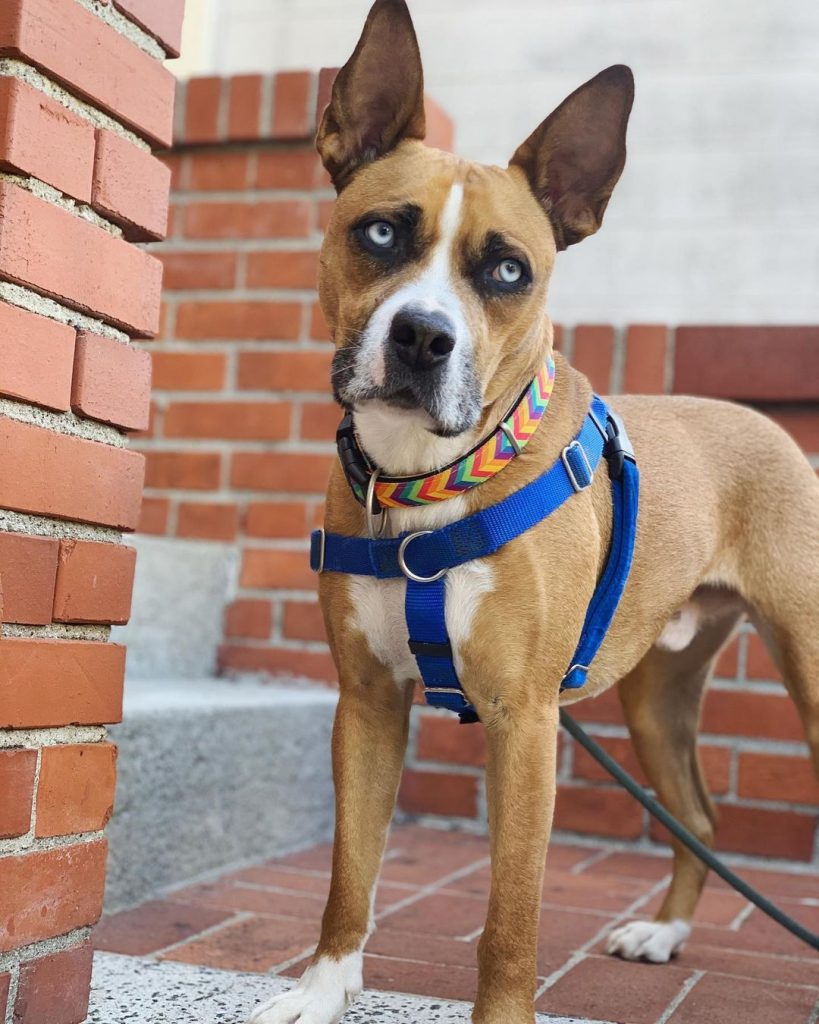
General Appearance
As an unrecognized breed, the Boxsky has no definite appearance.
Do not be surprised to find two individuals of this breed with many physical distinctions.
While some will look more like the Siberian Husky, others may be more like the Boxer.
The third group will combine both genes.
Generally, this breed is muscular and athletic with eyes that may either be Husky blue or the brown color of the Boxer.
The ears may either stand erect like the Husky’s or droop like that of the Boxer.
You might also find either the long snout of the Husky or the shorter one of the Boxer.
Size
The Boxer is slightly bigger than the Husky, and the mix tends to fall somewhere in between, though it might also be bigger than both parents.
Its weight range is from 35 to 80 pounds and it grows as tall as 20 to 35 inches.
Colors and Coat Type
The Boxsky often has the short coat of the boxer, though it would be denser and shed during autumn and the fall.
The colors you might find on this breed include fawn, brindle, black, grey, and white.
Temperament, Behavior & Intelligence of the Siberian Husky and Boxer Mix
This mix has good options of personality traits to pick from.
Its parents have been formidable household pets. Expect the offspring to be too.
Like with appearance, there is no standard temperament or behavior.
Nevertheless, there are some common grounds.
Loyalty is one such common trait. Like its parents, this mix is loyal and faithful to its family.
It may inherit the wariness of the Boxer or the unreserved friendliness of the Siberian Husky.
Either way, it makes a good watchdog. It could also be a good guard dog if it inherits more of the Boxer’s genes.
An independent mixed breed, this mix might pose some challenges during training.
It is the owner’s responsibility to train it with patience, firmness, and consistency.
Its intelligence does make learning commands easy, which is a plus.
This hybrid also gets the affectionate nature of both parents and showers it on its family.
Both parents have had experiences being in groups, so expect the offspring to flow well with everyone.
You should also be ready to challenge these dogs both physically and mentally lest they become bored and engage in destructive behaviors.
Are Boxer Husky Mixes Good Family Dogs?
This Mix has qualities that make it a good family dog. Its affection, loyalty, protectiveness, and enthusiasm make it a delightful addition to any family.
It can also be trained to be a guard dog or a watchdog, an advantage if you seek security.
It is kid-friendly as well, though its energy could be too much for an infant.
It is more ideal to have them in a home with grownup kids who can handle their energy.
Are They Good With Other Dogs & Pets?
The Husky is a pack animal, but the Boxer is more territorial and needs socialization before it can live with other dogs.
Your safest bet with this mix is to socialize it at a young age to co-operate with dogs.
As for pets, this mix has a strong prey drive and may not be the best option for a house with other cats and rodents.
How Much Does Husky Boxer Mix Puppies Cost?
This breed is a rare one and it is difficult to find.
Shops with Huskies or Boxers in stock may have a Boxsky mix, so they are your best shot in getting this breed.
Even then, you will need to do some research.
The price depends majorly on the breeder and some other factors like age and location.
Having said that, a Boxer Siberian Husky mix puppy costs around $1,000 to $1,500.
You must get a breeder with credibility as this would reduce the risks of getting a pup who was poorly bred or with an inherited medical issue that may manifest later in life.
Backyard breeders sell at a cheaper price, but it may not be advantageous in the long run.
With a credible breeder, you will get enough information on the medical history of the parents, feeding, and even the environment where the pups are bred.
Adoption is another option that is cheaper than and not as risky as the backyard breeder.
Rescue shelters are more reputable and trustworthy because they do not focus on profit like the breeders.
You still need to ask questions, especially on the background history of the pup you wish to adopt.
Also, know the reason they were abandoned and any possible trauma.
Caring for a Boxsky Dog
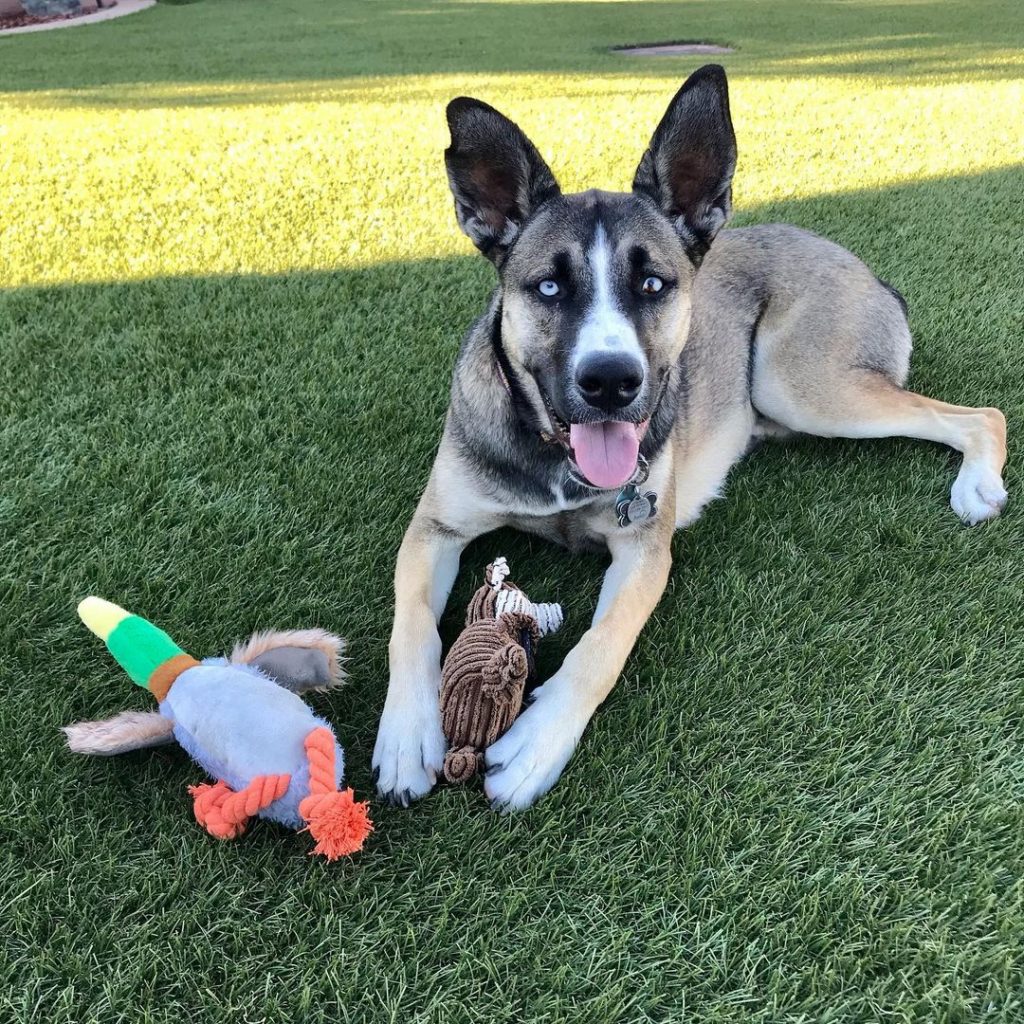
Food & Nutrition
Much like its parents and other breeds of the same size, this mix needs a quality diet with the right nutrients to keep it healthy and strong.
Some general rules apply to this breed, one of which is its vital need for protein.
It should also be fed a good amount of minerals and vitamins for better growth and functioning of the system.
The recommended meal for this breed is animal meat like chicken, pork, and lamb.
For a dog mix this size, 3 cups daily are appropriate.
This is for the adult as pups require a bigger portion, but strictly on a puppy diet.
Size is another factor that influences feeding. While Huskies are not prone to obesity, Boxers are.
Consequently, be watchful of the mix weight as you feed it.
In addition, be wary of giving your dog human food, even those it can eat.
It should be kept at a minimum and reserved as an occasional treat, not a regular fixture in a pooch’s diet.
Some human food should be avoided like chocolates, any meal with salt or garlic, and alcohol.
Some dog food brands are recommended for this breed. Some of them are:
- Taste of the Wild High Prairie (Chewy | Amazon)
- Nutro Large Breed Adult Dry Dog Food (Chewy | Amazon)
- Royal Canin Boxer Adult Dry Dog Food (Chewy | Amazon)
- Wellness CORE Grain-Free Dry Dog Food (Chewy | Amazon)
Exercise
As you already know, this breed is an energetic one with a high exercise need.
The ideal owner should be active, one who enjoys regular exercise.
The advantage to this is that exercising this dog mix also keeps you healthy. It also makes for a great bonding experience.
To let out its energy, you should exercise it for at least 1 hour or an hour and 30 minutes.
It needs activities like a long walk, running, jogging, hiking, and physical games like tug of war or fetch.
Exercise and training interlope in that exercise can be a good opportunity to challenge and socialize your pet.
Mental exercises are also regarded as good forms of training.
Playtime in a fenced yard is another great way to give this mix some exercise.
With toys like chew balls, you can keep your pooch busy.
Playtime is especially beneficial for the puppy who shouldn’t be allowed to run or partake in any strenuous activities.
The most challenging need of this mix is training, yet it is rewarding if you can take up the task.
Its stubbornness and curious mind make it difficult to get it to concentrate.
You must let it know your position as leader of the pack if you hope to get anywhere with it.
Once it respects you, training is easier as its intelligence makes it learn with ease.
Start training your Boxer Husky mix dog when it is still a pup. That way, you can curtail its stubbornness.
It is also easier to handle a puppy than an adult and prevent it from developing any bad habits.
House training is one form of training your pup requires.
It should recognize where it sleeps, eats, and where it should go when it needs to use the bathroom.
This is a great first step before you move on to complex commands.
Socialization should begin early too. Here, curiosity is a virtue as it means your pup would be interested in new places and even people.
Early socialization also curbs the wariness this Mix may get from its Boxer parent, especially towards other dogs.
In addition, teach it to obey basic commands. One-word commands are easier for dogs to understand and memorize, so you should go with those.
Common examples are Sit, Roll, and Come.
Be consistent, patient, firm but gentle while training.
Grooming Needs
Often, the Boxsky gets the short coat of the Boxer, though some might inherit that of the Siberian Husky.
Either way, it needs regular brushing. Its coat also sheds. During those periods, this mix would need extra attention.
An advantage of this breed is that it neither drools nor get constantly dirty.
Therefore, bathing should be minimal. Use a good shampoo that fits the hybrid’s coat.
Besides coat care, the ears should be cleaned when wax becomes excessive.
You should also look out for signs of infection, especially if your Boxsky inherits the floppy ears of the Boxer as those are vulnerable to an ear infection.
Keep the ears dry after a bath to prevent water from accumulating.
Dental care and eye cleaning are important. Brush your dog’s teeth at least twice a week.
Eye cleaning involves clearing the dirt and wiping the areas around.
Health & Conditions
With a long life span, expect to have the Boxsky around for a long while.
Its long life is more guaranteed when you constantly meet its needs and take it on regular checkups.
You should equally know what illnesses this hybrid may be prone to thanks to its parents.
They include:
- Hip dysplasia: This is the most common canine illness. It happens when the ball and socket of the hip joint don’t develop properly. It can lead to arthritis or lameness.
- Hypothyroidism: This is caused by a deficiency of the thyroid hormone in the dog’s body. It leads to weight gain and slow metabolism.
- Bladder disease: This is often gotten from the Husky and causes the affected dog to not urinate well.
- Wobbler syndrome: The wobler syndrome affects the spinal cord of the dog, thus inhibiting its movements and causing neck pains.
- Eye conditions: Similar to other designer dog breeds, the most common eye issues this Mix may suffer from are cataracts and Progressive Retinal Atrophy.
- Cardiac problems: This crossbreed is also susceptible to some heart defects like a deformity in the heart chambers.
How big does a Husky Boxer mix get?
The Boxer Husky is a medium to large-sized breed that weighs 35 to 80 pounds and grows up to 35 inches.
Are Boxer Husky mix good dogs?
This Mix makes a good household pet for the family with a big space, an active lifestyle, and experience in handling a dog.
What is a Boxer Husky mix called?
Although it has no standard name, the Boxer Husky Mix is often called the Boxsky.
Conclusion
There are many pros to owning a Boxer Husky mix dog, the biggest of which is it being able to play both the role of a companion and a security dog.
There are some cons to consider though. Those may influence your choice of this breed.
In many aspects, this breed isn’t easy to take care of. It isn’t easy to find either.
However, the tips in this guide should put you on the right path on how to locate and care for this Mix.
You May Also Like:
Buskdoggy: Husky Bulldog Mix Breed Info & Guide


